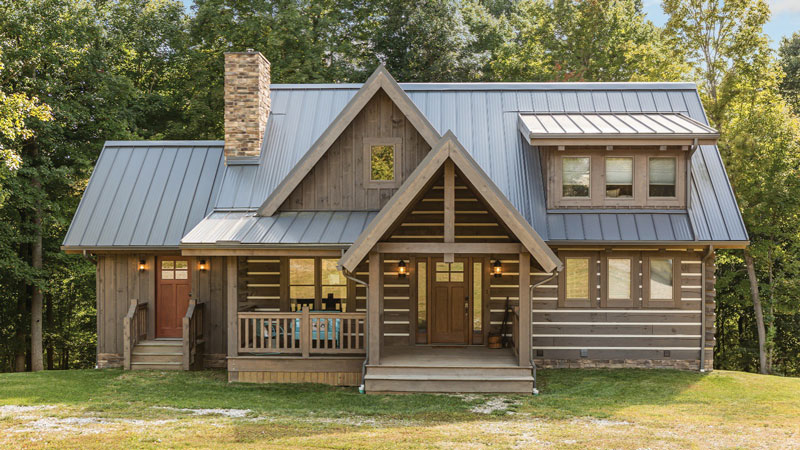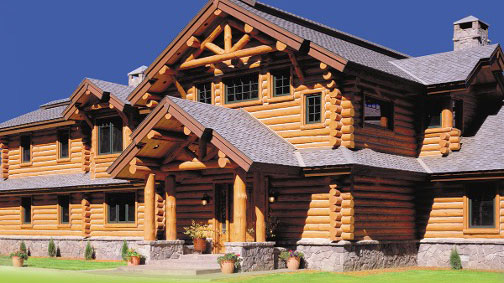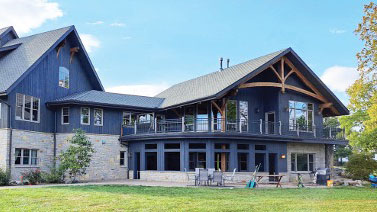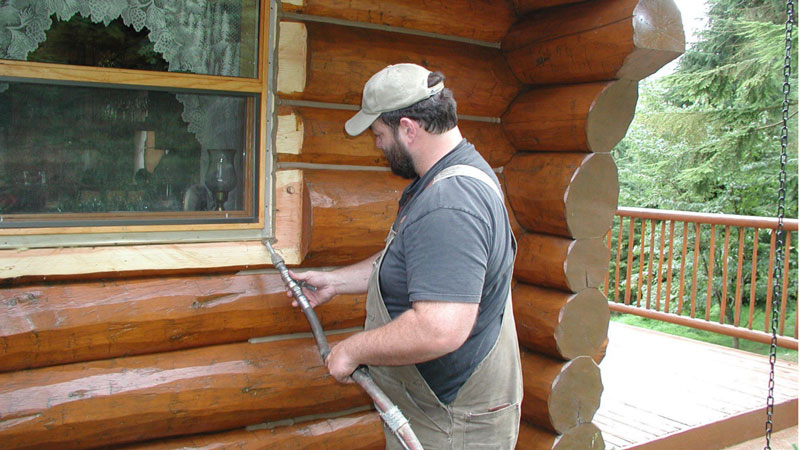Windows and exterior doors are essential components of any house. In log homes, these gateways to the outside are a vital aspect of the nature-minded lifestyle that draws people to this genre of home in the first place. Proper installation, which includes sealing, keeps a home tight and secure against drafty air, moisture, bugs and external pollutants like wildfire smoke. And when it comes to sealing windows and doors in a log home, compared to a conventional or timber frame home, there are a few differences to know about. (But rest assured—the basic processes are similar!)

Understand the Basics
All windows and doors, regardless of the construction style, have a rough-cut opening that is about one-half inch larger than the actual unit. This is so the unit can be inserted with adequate space to make it level and plumb using shims. Shims are a thin piece of material, typically wood or plastic, that are inserted in the gaps between the unit’s frame and the wall to ensure it’s aligned for smooth operation and stabilize against sagging or shifting.Next, the air space around the rough opening is filled with an open cell insulation spray foam. Closed cell insulation has a dense, rigid structure after curing. When it expands, it can break a window or push a door frame out of alignment. In contrast, open cell insulation remains a bit pliable after curing. As it expands it moves around the shims and frame.
The last step involves securing the exposed exterior windows or door flanges with flashing tape. This tape enhances exterior water resistance around the element’s perimeter.

Log Home Details
A true structural log home requires window and door trim details that allow for the additional shrinking and settling that comes with logs. This includes:- Adding as much as 1.5 inches above a 7-foot door as opposed to just one-half inch.
- Using flashing above the unit to help prevent water from seeping into the structure and logs.
- Having slotted jambs on the sides that allows for the logs to settle.
Log home manufacturers typically detail openings for sealing windows and doors based on the type of system they use. Glued laminated wood or "glu-lam" (a type of multilayer structural wood bonded with adhesives) shrinks the least. Large, handcrafted “green” logs are laden with moisture content and settle the most. In the middle are kiln-dried logs. These shrink less than green logs, but there is still some settling due to the weight of a second floor and roof.

Remember, the above applies to structural log homes. These authentic log homes can be identified by their hallmark, eye-catching corner trim workmanship featuring dovetail, butt-and-pass or saddle notches. Log-sided homes, those with a log-type veneer, timber frame homes with structural insulated panels (SIPs), and conventionally framed wall systems do not require details for settling.

Finishing Touches
There are many different types of sealants for a log home. Chinking, the Perma-Chink namesake, is a flexible, textured “mortar” that seals wider gaps and chinks spaces between logs, creating that telltale, attractive look of historical log homes.
For windows and doors, Perma-Chink’s Energy Seal provides another layer of sealing, eliminating any gaps, fully blocking the wind, and keeping out insects. It also provides an aesthetic touch. Energy Seal is a textured caulking, and it accepts stain color for a seamless transition between window and door frames and the log exterior.

Final Advice
Thoroughly sealing your log home’s doors and windows properly, from installation to Energy Seal, will keep your home comfortable and healthy by keeping weather and pollutants out. Look to Perma-Chink Systems to keep your home sealed with products that work hard and appear beautiful to protect your home’s longevity, performance and your log cabin lifestyle.Follow along! Join Perma-Chink Systems, Inc. in this exclusive Ask the Expert series to get answers to all your top questions about staining, sealing, maintenance and more!
Sponsored by Perma-Chink Systems, Inc.











